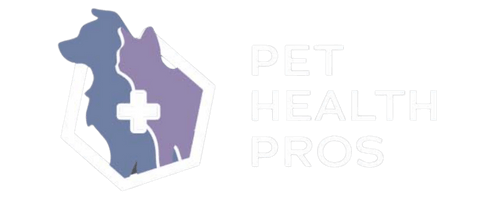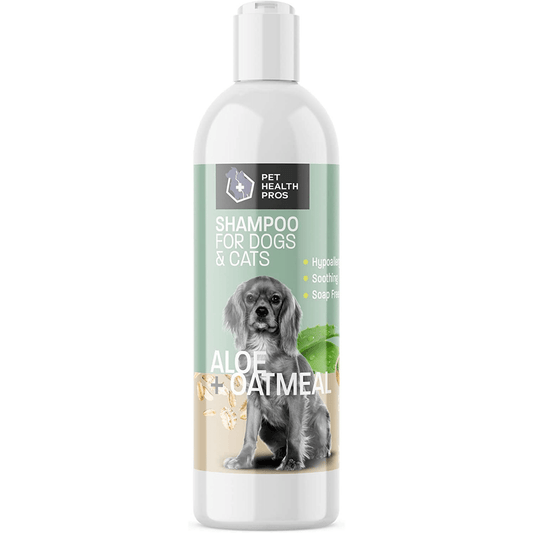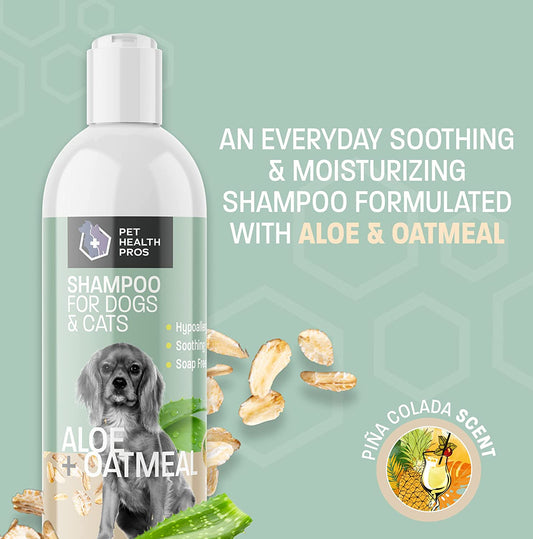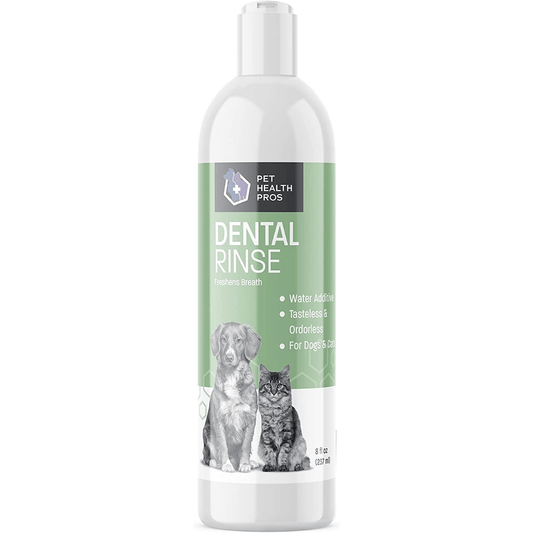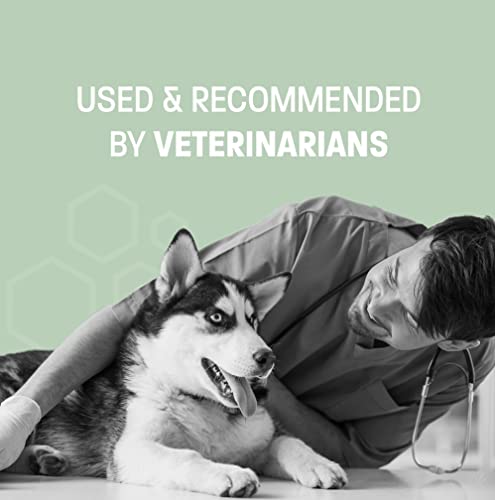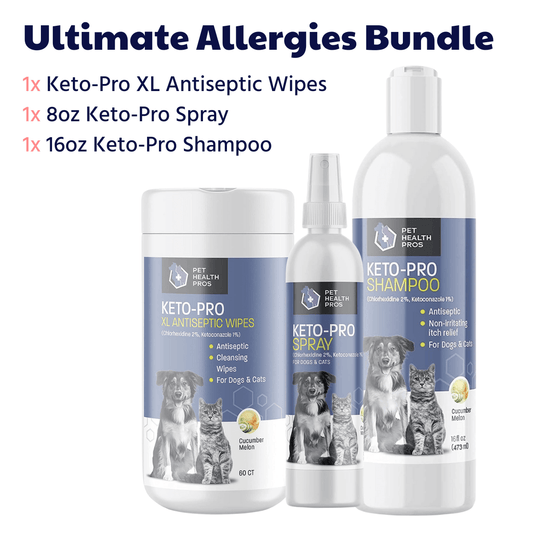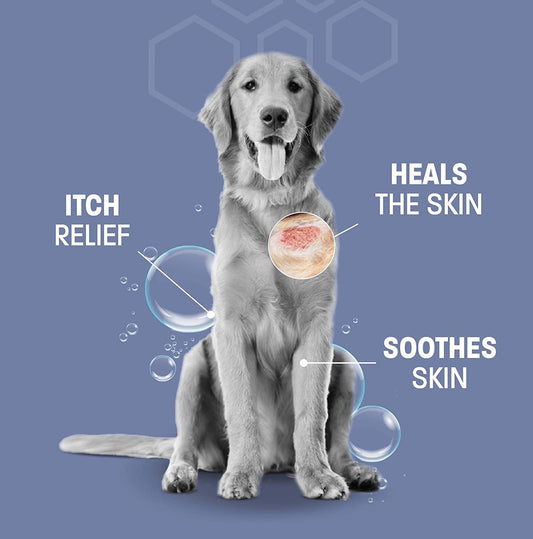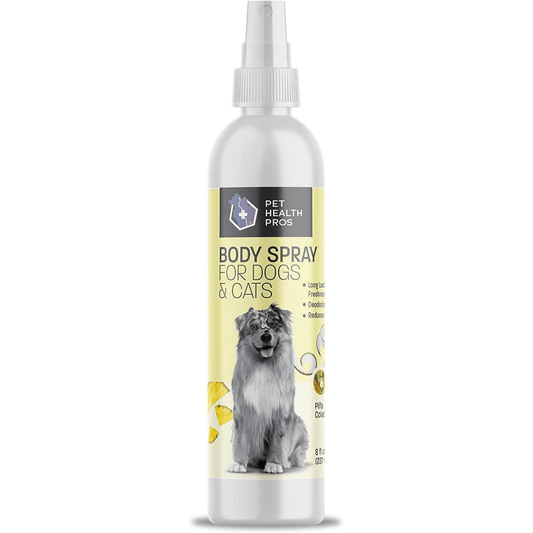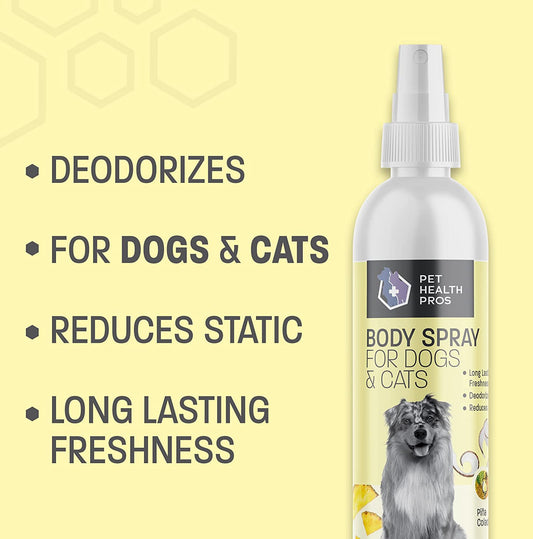When your beloved pet faces an injury, it can be a distressing experience filled with uncertainty. Knowing how to respond quickly and effectively is crucial for their wellbeing. This article, presented by Pet Health Pros, outlines essential steps for pet owners to navigate through pet injuries, from immediate first aid to long-term recovery, and emphasizes the importance of prevention and preparedness. With over fifty years of combined experience in veterinary medicine and a commitment to expertly crafted, affordable pet health supplies, Pet Health Pros is your guide and partner in ensuring healthier, happier lives for your furry friends.
Key Takeaways
- Quickly assess the situation and prioritize safety before administering basic first aid to your pet, and recognize when to seek veterinary assistance.
- Understand the critical role of veterinarians in diagnosing and treating pet injuries, and be prepared for what to expect during a vet visit.
- Support your pet's long-term recovery with a comfortable environment, appropriate rehabilitation exercises, and regular monitoring of their progress.
- Prevent future injuries through education on pet safety, assembling a pet first aid kit, and making training and environmental adjustments.
- Leverage Pet Health Pros' expertly crafted health supplies, made with quality ingredients, to support your pet's health journey and utilize their resources for comprehensive care.
Immediate Actions: First Aid for Pet Injuries
Assessing the Situation: Safety First
When your pet is injured, the first step is to ensure the safety of both you and your animal. Approach your pet calmly to avoid additional stress or injury. It's crucial to assess whether the pet can move without pain or if there are any obvious wounds that need immediate attention.
Assessing the situation involves checking for signs of shock, which can include pale gums, rapid breathing, and a weak pulse. If these symptoms are present, keep your pet warm and quiet while you seek immediate veterinary care.
- Ensure your pet is in a safe location away from hazards.
- Speak softly and move slowly to avoid startling them.
- Check for bleeding, swelling, or signs of pain.
In the event of a serious injury, it's important to stabilize your pet before moving them. This may involve gently wrapping a wound or creating a makeshift stretcher.
Remember, even the gentlest of pets may bite or scratch when in pain, so exercise caution. If you're unsure about how to handle the situation, it's best to contact a professional. Pet Health Pros is an AI-driven pet health platform offering personalized care, emergency assistance, nutrition advice, and behavior insights for all pets. Join for a free trial and expert guidance.
Basic First Aid Techniques for Common Injuries
When your pet suffers an injury, knowing basic first aid techniques can be crucial for stabilizing them before professional help is available. It's important to remain calm and approach your pet gently to avoid further stress or injury.
- For cuts and scrapes, clean the wound with mild soap and water, and apply gentle pressure with a clean cloth to stop any bleeding. Cover the wound with a sterile bandage.
- In case of sprains or strains, limit your pet's movement and apply a cold compress to reduce swelling.
- If your pet is experiencing heatstroke, move them to a cool area immediately and offer small amounts of water to drink.
Remember, these first aid measures are not a substitute for veterinary care but can help mitigate the severity of the injury until you can reach a professional.
Always have a pet first aid kit on hand, which should include items such as gauze, non-stick bandages, adhesive tape, and a digital thermometer. Knowing how to use these supplies effectively can make a significant difference in your pet's recovery. If you're unsure about how to handle a specific injury, it's always best to consult with a veterinarian immediately.
When to Call the Vet: Recognizing Serious Issues
In the unfortunate event of a pet injury, it's crucial to know when home care is insufficient and veterinary assistance is required. Immediate veterinary attention is necessary if your pet exhibits any of the following signs:
- Uncontrolled bleeding
- Signs of pain such as whining, shaking, or reluctance to move
- Difficulty breathing
- Suspected broken bones or inability to walk
- Seizures or loss of consciousness
- Eye injuries
- Suspected poisoning
Remember, it's better to err on the side of caution. If you're unsure about the severity of the injury, it's always best to consult with a vet.
After stabilizing your pet with first aid, promptly contact your veterinarian or an emergency pet clinic. Keep the contact information for your local vet and a 24-hour emergency animal hospital readily accessible. A well-stocked pet first aid kit can help manage minor injuries, but recognizing when professional care is needed can save your pet's life.
Professional Care: Seeking Veterinary Assistance
Understanding the Role of a Veterinarian in Pet Injuries
When your pet is injured, a veterinarian is your primary ally in diagnosing, treating, and managing the injury. Veterinarians are trained to handle a wide range of pet health emergencies, from minor cuts and bruises to more serious conditions such as fractures or internal injuries. They possess the expertise to perform necessary diagnostic tests, prescribe medications, and recommend the best course of action for your pet's recovery.
Veterinarians also play a crucial role in educating pet owners about injury prevention and proper care. They can provide valuable advice on how to create a safe environment for your pet and what signs to look out for that may indicate a more serious health issue. It's important to establish a relationship with a vet you trust, as they will be an essential resource throughout your pet's life.
- Assess the injury and provide immediate care
- Perform diagnostic tests to understand the injury's extent
- Prescribe medication or treatment
- Advise on home care and injury prevention
In the event of a pet injury, prompt professional evaluation is crucial. A veterinarian's intervention can make the difference between a quick recovery and long-term complications.
Remember, while first aid can be administered at home, it is not a substitute for professional veterinary care. Always consult with your veterinarian if you are unsure about the severity of your pet's injury or how to care for them.
What to Expect During a Veterinary Visit
When you visit the vet after your pet has been injured, it's important to know what to expect to ensure the best care for your furry friend. Initially, the veterinary team will conduct a thorough physical examination to assess your pet's condition. This may include checking vital signs like heart rate and temperature, as well as looking for signs of pain or discomfort.
Your pet's medical history will be reviewed, and you may be asked about any recent changes in behavior or appetite. Diagnostic tests, such as blood work or X-rays, might be necessary to determine the extent of the injury. The vet will then discuss the findings with you and propose a treatment plan. This plan may involve medication, surgery, or other interventions.
It's essential to ask questions and express any concerns you may have during this time. The vet is there to help and will provide explanations and guidance on how to care for your pet at home.
Remember, choosing a veterinarian willing to create personalized care plans for your dog is crucial for their health and wellbeing. Individualized plans consider age, breed, lifestyle, and medical history. Following the vet's instructions is key to your pet's recovery and future health.
Post-Visit Care: Following the Vet's Instructions
After your pet's visit to the vet, it's crucial to adhere to the professional advice given for a smooth recovery. Ensure all medications are administered as prescribed, and keep a close eye on your pet's behavior and physical condition for any changes.
Recovery can vary greatly depending on the injury and treatment, so it's important to follow the vet's specific instructions regarding rest, diet, and activity levels. Here's a simple checklist to help you stay organized:
- Record medication times and dosages
- Note any dietary restrictions or recommendations
- Schedule follow-up appointments as advised
- Monitor your pet for signs of discomfort or complications
Remember, the goal of post-visit care is to support your pet's healing process and prevent any setbacks. Regular monitoring and adherence to the vet's plan are key to a successful recovery.
If you notice any of the top 5 signs your dog needs vet attention, such as changes in appetite or water intake, do not hesitate to contact your veterinarian. Immediate action can be critical.
Long-Term Recovery: Rehabilitation and Support
Creating a Comfortable Recovery Environment
After your pet has been treated for an injury, creating a comfortable recovery environment is crucial for their healing process. Ensure your pet has a quiet, cozy space where they can rest without being disturbed. This area should be easily accessible and free from hazards that could cause further injury.
- Keep the recovery area at a comfortable temperature.
- Provide soft bedding that supports any injured limbs.
- Limit your pet's movement if advised by the vet to prevent strain.
- Maintain cleanliness to avoid infection.
It's important to monitor your pet's comfort levels and make adjustments as needed. A stress-free environment will help speed up your pet's recovery.
Remember, a comprehensive guide to pet care covers not only the physical aspects but also the emotional well-being of your pet. By being a responsible owner and attending to your pet's needs, you're ensuring a healthy, fulfilling life for them during this critical time.
Rehabilitation Exercises and Activities
After your pet has received proper medical attention for an injury, the next crucial phase is rehabilitation. Rehabilitation exercises and activities are essential for helping your pet regain strength, flexibility, and confidence. It's important to follow a structured rehabilitation plan, often designed by a veterinary professional or a certified animal physiotherapist.
Consistency in performing these exercises is key to a successful recovery. Start with gentle movements to assess your pet's comfort level and gradually increase the intensity as recommended. Here's a basic outline of activities you might encounter:
- Passive Range of Motion (PROM) exercises to maintain joint flexibility
- Controlled walking to improve coordination
- Strength-building exercises like standing on uneven surfaces
- Swimming or water therapy for low-impact muscle building
Remember, each pet is unique, and their recovery program should be tailored to their specific needs and abilities. Always monitor your pet's response to the exercises and consult with your vet if you notice any discomfort or setbacks.
By incorporating these activities into your pet's daily routine, you can significantly enhance their recovery process. However, it's crucial to balance exercise with adequate rest to prevent overexertion. With patience and dedication, you can help your furry friend return to their playful and active self.
Monitoring Progress and Adjusting Care as Needed
Monitoring your pet's recovery is crucial to ensure they are healing properly and to detect any potential complications early. Regularly assess your pet's condition, noting any changes in behavior, appetite, or mobility. It's important to track these observations over time to provide your veterinarian with accurate information during follow-up visits.
Adjustments to care may be necessary as your pet heals. This could include changes to medication dosages, alterations to physical therapy routines, or modifications to their living space to better accommodate their needs. Here's a simple checklist to help you monitor your pet's progress:
- Observe and note any changes in your pet's pain levels or discomfort.
- Keep track of your pet's appetite and water intake.
- Monitor the healing of wounds or surgical sites for signs of infection.
- Evaluate your pet's energy levels and interest in play or interaction.
- Schedule regular check-ups with your vet to reassess your pet's condition.
Remember, each pet is unique, and recovery times can vary. Patience and attentiveness are key to a successful rehabilitation. If you notice any concerning signs, do not hesitate to contact your veterinarian.
Prevention and Preparedness: Avoiding Future Injuries
Educating Yourself on Pet Safety
Understanding how to prevent pet injuries is crucial for any pet owner. Knowledge of pet safety is a cornerstone of responsible pet ownership. By educating yourself, you can create a safer environment for your furry friend and reduce the risk of accidents.
Prevention is better than cure, and this is especially true when it comes to pet injuries. Familiarize yourself with the common hazards in your home and garden, and take proactive steps to mitigate them. For example, ensure that toxic substances like cleaning products and certain plants are out of reach, and secure loose wires or small objects that could be ingested.
Regular training and exercise can significantly decrease the likelihood of injuries by keeping your pet fit and obedient. This not only ensures their physical well-being but also their mental health.
Lastly, always have a plan in case of an emergency. Know the location of your nearest veterinary clinic and keep their contact information handy. A well-stocked pet first aid kit is essential for dealing with minor injuries at home before professional help can be sought.
Essential Supplies for a Pet First Aid Kit
A well-stocked pet first aid kit is a cornerstone of being prepared for any injuries your furry friend might encounter. Ensure your kit is tailored to your pet's specific needs, including size and any known allergies or health conditions. At a minimum, your kit should include:
- Sterile gauze pads and rolls for wrapping wounds
- Adhesive tape for bandages
- Cotton balls or swabs
- Antiseptic wipes or solution
- A pair of tweezers for removing splinters or ticks
- Scissors with blunt ends
- Disposable gloves for hygiene
- A pet thermometer (note that a pet's normal body temperature is higher than a human's)
- Saline solution for cleaning out wounds
- Emergency contact information for your veterinarian
Remember, home remedies for pets can be convenient and beneficial, but consulting a veterinarian is essential. Supplementing professional care with natural therapies can promote a happy and healthy life for pets.
It's crucial to regularly check your first aid kit, replenishing any used or out-of-date items to ensure it's always ready for use. A proactive approach to pet health can prevent minor injuries from becoming major issues.
Training and Environmental Adjustments to Prevent Accidents
Ensuring the safety and well-being of your pet involves more than just reacting to injuries; it requires proactive measures to prevent them. Training your pet is a crucial step in this process. Training tips for a well-behaved pet emphasize the importance of early training, positive reinforcement, consistency, and safety precautions. Different pets require specific training approaches for good manners and advanced techniques.
Environmental adjustments are equally important. By creating a safe living space, you minimize the risks of accidents. This includes securing loose wires, removing toxic plants, and ensuring that small objects that could be ingested are out of reach. Consider the following list to enhance your pet's safety:
- Regularly inspect your home for potential hazards.
- Install safety gates to prevent access to dangerous areas.
- Use pet-proof locks on cabinets containing harmful substances.
- Provide appropriate chew toys to discourage destructive behavior.
Remember, prevention is always better than cure. By investing time in training and making necessary environmental adjustments, you can significantly reduce the likelihood of pet injuries.
It's essential to tailor these strategies to your pet's specific needs and behavior. A well-trained pet and a safe environment work hand in hand to ensure a happy, healthy life for your furry friend.
Pet Health Pros: Your Partner in Pet Injury Management
Leveraging Expert-Crafted Health Supplies
When it comes to the health and recovery of your pet, using expert-crafted health supplies can make a significant difference. Pet Health Pros specializes in providing superior, affordable pet health supplies that are developed in collaboration with veterinarians. These products are made with locally sourced, top-grade ingredients, ensuring that your pet receives the best care possible.
Quality ingredients are essential for the effective healing and recovery of your pet. Pet Health Pros offers a range of products that are backed by a 100% satisfaction guarantee, reflecting their commitment to the well-being of your pet. With over fifty years of combined experience in Veterinary Medicine and Animal Health Management, the company stands as a testament to expertise and trust.
The right health supplies can accelerate healing, reduce discomfort, and contribute to a quicker return to your pet's normal activities. It's not just about treating an injury; it's about nurturing your pet back to health with the best resources available.
Here are some key differentiators that set Pet Health Pros apart:
- Expertise-Driven Formulations
- Quality Ingredients
- Customer-Centric Services
Remember, when selecting health supplies for your pet, consider the brand's reputation, the quality of their ingredients, and their commitment to your pet's health. Pet Health Pros embodies these qualities, making them a reliable partner in managing your pet's injury and overall health.
The Importance of Quality Ingredients in Recovery
When it comes to the recovery of our furry friends, the quality of ingredients in their diet and health supplies can make a significant difference. High-quality ingredients ensure that your pet is getting the necessary nutrients to support healing and overall well-being. Pet Health Pros is committed to using only top-grade ingredients, sourced responsibly and crafted in collaboration with veterinarians.
A balanced diet rich in vitamins, minerals, and appropriate proteins is crucial during recovery. Just as with human health, the inputs we provide to our pets can greatly influence their recovery outcomes. For example, omega-3 fatty acids are known for their anti-inflammatory properties, which can be beneficial for pets recovering from injuries.
It's not just about healing the injury, but also about supporting the pet's entire body system during the recovery process.
Additionally, homemade pet treats can be a way to control the ingredients your pet consumes, ensuring their health and safety. By preparing treats yourself, you can avoid potential allergens and provide tailored nutrition based on your pet's specific needs.
Remember, the goal is to not only heal the injury but to also strengthen your pet's body against future health challenges. Quality ingredients are the foundation of this goal, and with Pet Health Pros, you can trust that your pet's health is in good hands.
Utilizing Our Resources for Your Pet's Health Journey
At Pet Health Pros, we understand that the journey to recovery for your pet is ongoing and requires consistent support. Our resources are designed to be a part of your pet's health journey every step of the way. From educational content on pet-proofing your home to our expertly crafted health supplies, we are committed to aiding in the prevention and management of pet injuries.
Our online platforms, including our Amazon Storefront, provide easy access to our full range of pet health products. This convenience ensures that you can quickly find the right supplies when your pet needs them the most. We pride ourselves on our collaboration with veterinarians and the use of locally sourced, top-grade ingredients, ensuring that every product meets the highest standards of quality and efficacy.
By leveraging our resources, you can create a safe and comfortable environment for your pet, significantly reducing the risk of future injuries. Our article on pet-proofing your home emphasizes the importance of securing hazards and establishing safe zones, which are crucial steps in maintaining your pet's safety.
Remember, prevention is key. By staying informed and prepared, you can minimize the chances of pet injuries and ensure a happier, healthier life for your furry friend.
At Pet Health Pros, we understand that managing your furry friend's injuries can be stressful and overwhelming. That's why we're dedicated to being your go-to resource for all pet injury management needs. Our team of experts is here to provide you with the support, advice, and products necessary to ensure a swift and safe recovery for your pet. Don't let pet injuries set you back—visit our website today and let us help you every step of the way.
Conclusion
In conclusion, navigating pet injuries requires prompt action, knowledge, and compassion. As pet owners, it's our responsibility to be prepared for such emergencies and to provide the best care possible for our furry friends. Remember to stay calm, assess the situation, and seek professional help when necessary. Utilizing high-quality pet health supplies, like those offered by Pet Health Pros, can make a significant difference in the recovery process. With their commitment to expertly crafted solutions and a customer-centric approach, you can trust that you're giving your pet the best chance at a swift and comfortable recovery. Always keep in mind that the well-being of our pets is paramount, and by following the steps outlined in this article, you can ensure that your pet receives the care they deserve during those critical moments.
Frequently Asked Questions
What should I do immediately if my pet is injured?
First, ensure your safety and then assess the situation calmly. Provide basic first aid if possible and contact your veterinarian if the injury seems serious.
How can I tell if my pet's injury is serious enough to require veterinary care?
If your pet is in severe pain, bleeding excessively, has a broken bone, or is showing signs of shock or distress, it's important to seek veterinary assistance immediately.
What should I expect during my pet's visit to the vet after an injury?
Your veterinarian will assess your pet's injury, provide necessary treatment, and may suggest diagnostic tests. They will also give you instructions for care at home.
How can I create a comfortable environment for my pet's recovery?
Provide a quiet, safe space with easy access to food, water, and a comfortable resting area. Keep the environment stress-free and follow your vet's instructions for care.
What items should I include in my pet's first aid kit?
Your pet's first aid kit should include gauze, non-stick bandages, adhesive tape, scissors, tweezers, antiseptic wipes, a thermometer, and emergency contact numbers.
How does Pet Health Pros support my pet's health and recovery?
Pet Health Pros offers superior pet health supplies crafted in collaboration with veterinarians, made with top-grade ingredients, and backed by a 100% satisfaction guarantee to support your pet's health journey.
